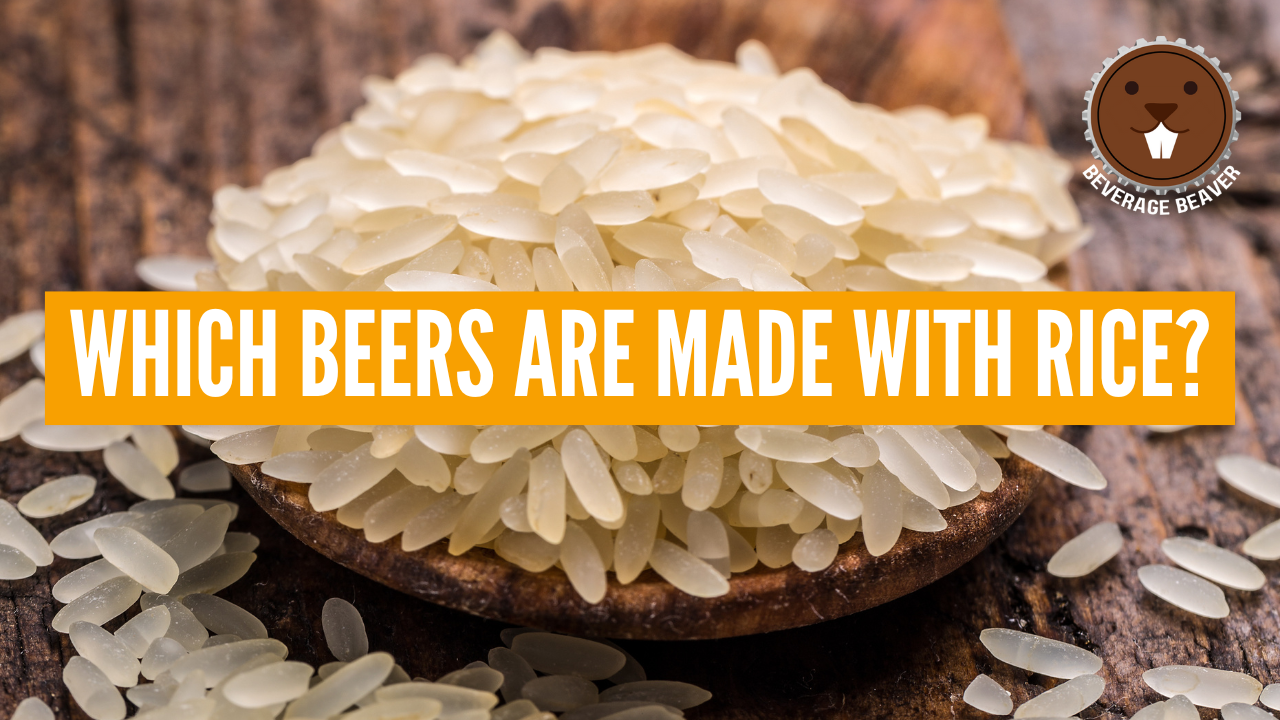Why Are Some Beers Made With Rice And What Brands Use It?
Beers are brewed in all kinds of different ways around the world. This also means the ingredients vary from region to region. One of the most unusual ingredients used in modern-day beer brewing is rice. Simultaneously, it’s also one of the ingredients consumers have many questions about. Let’s start with a quick introduction:
In the United States, only Anheuser-Busch uses rice as an ingredient in their beers (such as Budweiser and Bud Light) to give their beer a less bitter taste and a higher crispness. Furthermore, it also ensures the beer has a lighter color than European lagers. Besides Anheuser-Busch, many Asian beers also use rice for the same reasons.
However, that certainly doesn’t tell the whole story. Below, we’ll first explain the three main reasons why brewers use rice in their beers. After that, we’ll talk about the major beer brands that use rice and if there are parts of the world where rice is more common. Finally, we’ll talk about some common questions about beer brewing with rice. Read on!
Why Do Brewers Use Rice In Beer?
In order to understand why rice is added to beer, we need to understand a little more about how beer is made. Originally, beer was invented in Europe, where it had four main ingredients: malted barley, water, hops, and yeast.
Alcohol Content And Bitterness
The malted barley is there to create a herbal/floral taste, and as a source of sugars, the hops create bitterness, and the yeast turns the sugars that are in the barley into alcohol during a process of fermentation. This recipe would make quite a bitter beer, which is why European lagers such as Heineken and Stella Artois have an IBU of 20 – 24 (that’s the scale of bitterness).
American brewers took the same ingredients, but they wanted to add a certain crispness to their beer. The ingredient they eventually started using for this is rice. They replaced part of the malted barley with rice. They did this because rice is an excellent source of fermentable sugars (thereby still reaching the required ABV), but it creates a more crisp and smoother beer than just using malted barley.
Interestingly, some American brewers have started to use more rice throughout the decades to make the beer less bitter. Take Budweiser, for example; the original recipe of Budweiser was invented in 1876. It contained 23.5% rice and had an IBU of 18.
In the 1970s, American consumers started liking less bitter beers more, which meant Budweiser increased the percentage of rice used to 30% of the ingredients, resulting in a beer with an IBU of 8-10.
Color
Furthermore, it’s interesting that most American lagers also have a slightly lighter color than their European counterparts. American lagers generally have an SRM (the scale of color for beer) of 2-4, whereas European pale lagers are between 2-6. This is because American consumers have proven to like the lighter color better. Below, we’ve added an SRM scale for reference (it doesn’t stop at 15, but there’s no need to go higher for now).

What Beers Are Made With Rice?
In the United States, there are not many beers that have rice as one of their ingredients. The only American beers that have rice as ingredients are Budweiser, Budweiser Zero, Bud Light, Bud Light Next, and all variants of Bud Light Seltzer (all of these brands are owned by the same company). All of these beers are part of the brewing company Anheuser-Busch which is owned by the parent company Ab InBev.
Other American beers, such as Miller Lite, Coors Lite, Busch, and Natural Light, use corn syrup instead of rice to achieve largely the same effect. Other mainstream beers sold in the United States (such as Mexican beers like Corona and Modelo) or European lagers (such as Heineken and Stella Artois) don’t use rice as one of their ingredients.
However, there’s one part of the world where almost all brewers use rice, and that part of the world is Asia. Popular brands include, but are certainly not limited to, Asahi, Singha, Tsing Tao, and Kingfisher.
Asian beers usually have rice as one of their ingredients because it fits the flavor palette of the Asian consumer. This group of consumers likes a smoother type of beer that’s not as bitter, and the addition of rice provides that.
Is Rice Beer Better For You Than Regular Beer?
With the addition of rice, many people also wonder whether or not rice beer is considered more healthy than regular European lagers that don’t contain rice. Let’s have a look.
Rice beer does not have any health benefits compared to beers that don’t have rice as an ingredient. This is because rice beers generally have the same alcohol and carbohydrates. Furthermore, rice beers may contain slightly less protein, although negligible.
Rice beers don’t have any health benefits compared to regular beer because they are only used for fermentable sugars. After the initial creation of the wort (the brew that contains the water, barley, and rice), the barley and rice grits are filtered out, which means only the sugars are left behind. This also means that many potential health benefits of the rice (such as fibers) are taken out.
Is Rice Beer Gluten Free?
Not all rice beers are gluten-free. Many brewers, such as Budweiser, only partially replace the barley they use with rice. This means the ingredients are part gluten-free (rice) and part non-gluten-free (barley). The result is that most rice beers that are sold are not gluten-free.
The only rice beer that’s 100% gluten-free is Japanese sake. This beer is only made with rice and does not contain any other grain that contains gluten.
What Type Of Rice Is Used In Beer Brewing?
The type of rice used in beers will heavily depend on the region in which the beer is brewed. For the United States, we know that Budweiser gets almost all its rice from domestic rice farmers. Furthermore, we know that they use white rice.
However, with this information, it’s still almost impossible to tell if they use a specific type of rice or not. On the other hand, we know that short-grain rice variants are preferable when brewing because the process of gelatinization happens at a lower temperature, which is preferable for the taste of the beer.
Therefore, we conclude that Budweiser uses short-grained, white rice variants grown in the United States to make their portfolio of beers. In Asian countries, this is most likely the same, although the rice variants will vary depending on the region.
Is Rice A Cheaper Ingredient Than Barley?
Many people believe that large breweries like Anheuser-Busch use rice to cut costs and dilute their beer. However, this is not true.
Rice was initially used as an ingredient in American lagers when German brewers in the late 1800s realized it was difficult to make high-quality beer with the high protein, six-row barley used in the United States. Therefore, they looked for a way to dilute the high-quality beer they could brew to create something that tasted as close to the original European lagers as possible.
They found rice was an excellent product for this since it doesn’t taste itself, but it still allowed the flavor of barley to come forward. At the time, rice was indeed cheaper to use, too, making it a great substitute to use.
Coincidentally, it turned out that American consumers thoroughly enjoyed the lighter taste of American lagers compared to European lagers. Therefore, rice gained popularity among domestic beers such as Budweiser.
However, these days rice has risen in price quite significantly. The price of rice sometimes even exceeds the price of barley, which means that brewers don’t use rice to cut costs. Instead, they use rice because that’s the taste consumers have gotten used to over the years in the United States.
Sources
- https://beerandbrewing.com/dictionary/i6AGSeKu6Z/
- https://www.usarice.com/news-and-events/publications/usa-rice-daily/article/usa-rice-daily/2018/04/04/rice-figures-prominently-in-craft-beer#
- https://beerandbrewing.com/dictionary/5D5hJPpbfk/
- https://www.intechopen.com/chapters/53124

